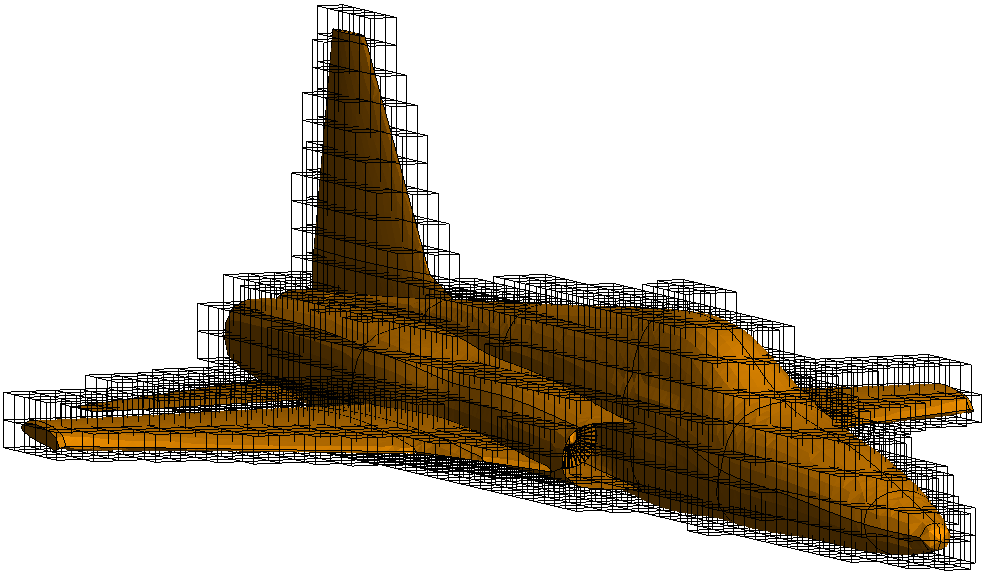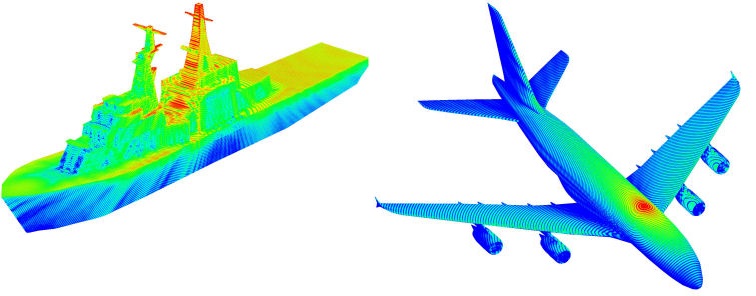Multilevel Fast Multipole Method (MLFMM)
The multilevel fast multipole method (MLFMM) is an alternative formulation of the technology behind the method of moments (MoM) and applies to much larger structures (in terms of the wavelength) than the MoM, making full-wave current-based solutions of electrically large structures a possibility.

The agreement between the MoM and MLFMM is that basis functions model the interaction between all triangles. The MLFMM differs from the MoM in that it groups basis functions and computes the interaction between groups of basis functions, rather than between individual basis functions and in so doing reduces the number of interactions that need to be calculated. The MLFMM never really calculates the matrix that is used during the method of moments calculation and as a result there is no direct solution for the MLFMM. An iterative solution utilising a fast matrix-vector product is used during the MLFMM solution phase.

Figure 1. MLFMM boxes at the third level.

Figure 2. MLFMM analysis of a ship (on the left) and antenna placement modelling on a commercial aircraft (on the right).